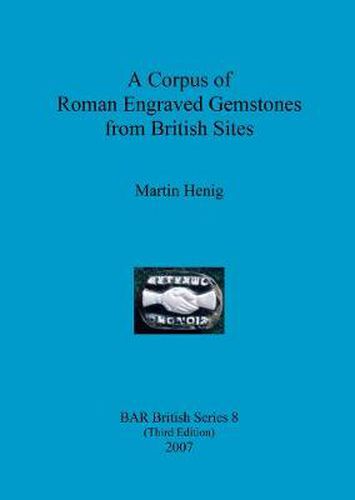Readings Newsletter
Become a Readings Member to make your shopping experience even easier.
Sign in or sign up for free!
You’re not far away from qualifying for FREE standard shipping within Australia
You’ve qualified for FREE standard shipping within Australia
The cart is loading…






This title is printed to order. This book may have been self-published. If so, we cannot guarantee the quality of the content. In the main most books will have gone through the editing process however some may not. We therefore suggest that you be aware of this before ordering this book. If in doubt check either the author or publisher’s details as we are unable to accept any returns unless they are faulty. Please contact us if you have any questions.
‘The primary purpose of an engraved gem or ring-bezel, cut in intaglio, was to make an impression upon some fictile material., which would be understood by the owner of the device, and by his associates, as a personal signature.’ So began Martin Henig’s original BAR Number 8 from 1978, in the British Series of British Archaeological Reports, a catalogue and study of over 1000 Roman engraved gemstones from the British Isles. Nearly 30 years later comes the third edition of this study, the new Preface to which concludes: ‘Over the years I have thought more about gems in relation to other arts and have integrated glyptics into my book on The Art of Roman Britain (1995). Several papers I have written recently have attempted to use gems, like sculpture, painting and bronzes to elucidate general artistic problems. This should be obvious but how many art-historians seem to have the inclination to take gems seriously? At least interest in provincial glyptics seems greater today and that gives me grounds for hope. Important studies are being conducted across the Empire ranging from Belgium . and Portugal ., toTurkey . and Israel. It is for each new generation to reassess the evidence, in the case of our subject with the aid of new techniques, of computing on the one hand and scientific analysis of materials and cutting techniques on the other. In addition the fresh eye of youth is always invaluable. Someone else can often see what should have been obvious to one all the time. (Wolfson College, Oxford. Feast of St Frideswide, 2005)
$9.00 standard shipping within Australia
FREE standard shipping within Australia for orders over $100.00
Express & International shipping calculated at checkout
This title is printed to order. This book may have been self-published. If so, we cannot guarantee the quality of the content. In the main most books will have gone through the editing process however some may not. We therefore suggest that you be aware of this before ordering this book. If in doubt check either the author or publisher’s details as we are unable to accept any returns unless they are faulty. Please contact us if you have any questions.
‘The primary purpose of an engraved gem or ring-bezel, cut in intaglio, was to make an impression upon some fictile material., which would be understood by the owner of the device, and by his associates, as a personal signature.’ So began Martin Henig’s original BAR Number 8 from 1978, in the British Series of British Archaeological Reports, a catalogue and study of over 1000 Roman engraved gemstones from the British Isles. Nearly 30 years later comes the third edition of this study, the new Preface to which concludes: ‘Over the years I have thought more about gems in relation to other arts and have integrated glyptics into my book on The Art of Roman Britain (1995). Several papers I have written recently have attempted to use gems, like sculpture, painting and bronzes to elucidate general artistic problems. This should be obvious but how many art-historians seem to have the inclination to take gems seriously? At least interest in provincial glyptics seems greater today and that gives me grounds for hope. Important studies are being conducted across the Empire ranging from Belgium . and Portugal ., toTurkey . and Israel. It is for each new generation to reassess the evidence, in the case of our subject with the aid of new techniques, of computing on the one hand and scientific analysis of materials and cutting techniques on the other. In addition the fresh eye of youth is always invaluable. Someone else can often see what should have been obvious to one all the time. (Wolfson College, Oxford. Feast of St Frideswide, 2005)